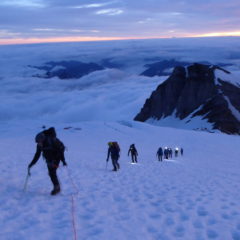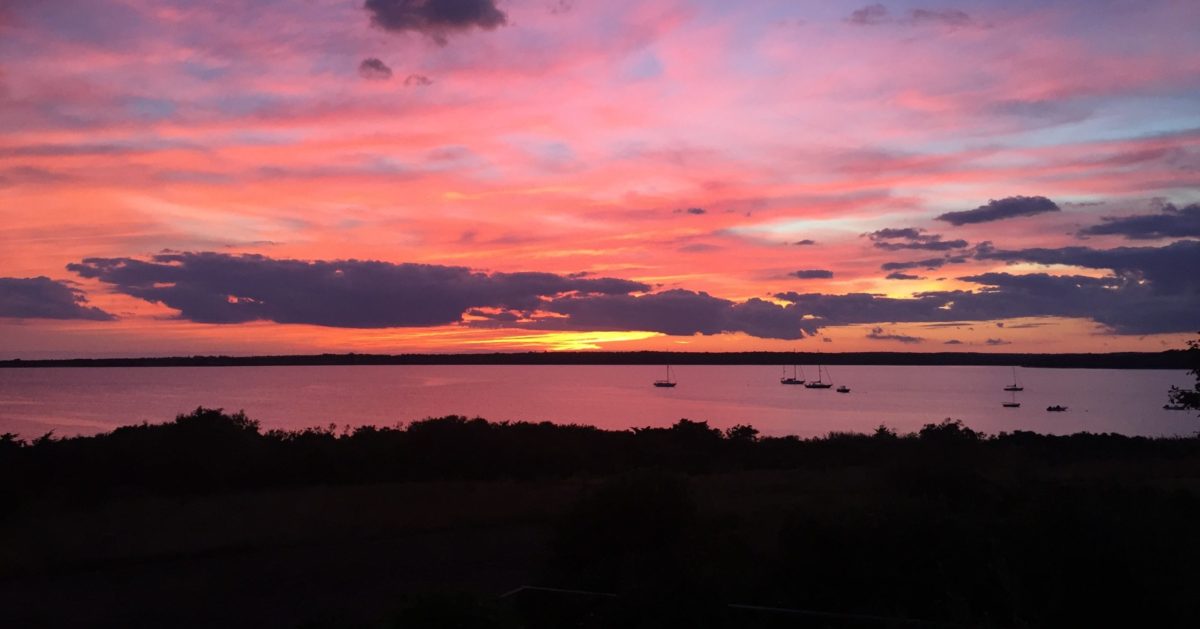
Getting ready
As described in my last post, this weekend was my first cross country ski race in thirty years: the “Gatineau Loppet”, a 50 kilometer (31 mile) ski marathon outside of Ottawa. I skied it with my old friend and college roommate “Y.M.”, otherwise known as Colin. Jill and Colin’s wife Anne graciously stepped up to be support crew.
The Gatineau is one of a global series of ski marathons called the “World Loppet”. As such, it attracts a surprisingly international field of skiers and – despite being one of the smaller World Loppet events – has a neat “big race” feel. In addition to lots of Canadiens and fellow Americans, we were up against Norwegians, Estonians, Italians, Czechs, Finns, and die hard skiers from a host of other nations, all of whom spend a disproportionate amount of time training for and competing in World Loppet and other ski marathons. Having not raced for three or four decades, Colin and I were like new kids on the first day of school; soaking it all in and trying to figure out where the playground, cafeteria, and Principal’s office were.
One thing we new kids understood was that having well-waxed skis is important, and that the art and science of cross country ski waxing has evolved substantially since the days when we were last racing. So, on the drive up we detoured through Putney, Vermont for a visit to Caldwell Sport: the center of the well-waxed ski universe. In addition to serving as wax technicians for many of the top racers in the U.S., Zach and Amy Caldwell have built a neat business around procuring and preparing top-of-the-line skis for serious cross country skiers. While Colin and I do not fall into the category of Zach and Amy’s usual clientele, they graciously agreed to prepare our skis for the Gatineau.
Zach applied both the glide wax, the wax on the tips and tails of the skis that makes them go fast, and the kick wax that goes under the foot to give them traction. In each case, he carefully mixed, ironed in, and buffed multiple coats. It says something about the complexity of the alchemy that this process – just for our skis- took Zach several hours. As he was waxing two days before the actual event, Zach had to make a bunch of educated guesses. He supplemented his instinct with multiple weather forecasts, computer models, and a helpful phone call to a contact on the race committee up in Gatineau. It was fun to watch the master at work, and to catch up on a number of the latest waxing trends. Here is a photo of Zach in his workshop prepping our skis.

We broke up the drive to Ottawa with a night at Trapp Family Lodge in Stowe, where we were able to sneak in a nice ski before dinner. The next day we rolled into Ottawa and established base camp at Chateau Laurier, one of those neat old Canadian National Railway hotels. We picked up our racing bibs, had a nice dinner in the hotel, went to bed, and were up early to catch the shuttle bus to the start line.

Ottawa base camp 
Scrambling to catch the shuttle to the start
At the start, skiers were trying to stay warm in the sub zero temperatures and jockeying for position in their various starting waves. If you are one of those experienced World Loppet racers I described earlier, you have almost certainly been placed in the first of multiple start waves based on your prior qualifying results. Worst case you are in Wave 2. If you are two former collegiate skiers who haven’t raced in thirty years, you have begged and pleaded your way into Wave 3, which means you start the race four minutes behind all the people you wish you were skiing with, and have a couple of hundred people to catch up to. Colin and I wormed our way to the front of Wave 3, (thankful that at least we weren’t in Waves 4, 5, or 6), waited for the starting gun, and hoped for the best.
The race
The initial few kilometers were a breeze, as there was a gap between us and the waves ahead of us. Then we caught up to Wave 2 and spent several kilometers passing skier after skier after skier. When we started passing skiers with “Wave 1” on their bibs, we knew we were having a strong race.
A cross country ski marathon is a lot like a running marathon. The trick is to go as fast as you can while leaving gas in the tank for late in the race, and – most of all- to avoid “hitting the wall”, or “bonking” as it is also affectionately known. If you bonk, you can forget about placing well, and even finishing is an open question. We had agreed at the outset that our goal was to ski the entire race together, but that if one of us bonked the other would keep on going.
The race played out magically. The first thirty kilometers roll through beautiful fields, woods, and along the edge of lakes. The tracks were perfect, and after passing a good chunk of Wave 2 and some of the Wave 1 skiers, we were able to ski side by side. Between the thirty and forty kilometer marks, the course climbs steadily uphill. This is where the race is made or broken. We skied that section as well as we could have hoped for, continuing to pick off Wave 1 skiers, and we crested the top of the hills with just enough energy left to navigate the final ten kilometers to the finish. With five kilometers to go, our support crew was on the trail shouting encouragement and Jill took this photo:

As we approached the finish line, the announcer mentioned our names and hometowns. We crossed the finish line side by side, raised our arms up together, and the announcer added “nice teamwork!”. Out of a field of 550 skiers, we ended up placing 59th overall and 6th in our age group. We hobbled away from the finish area feeling really good about our effort.

Reflections
At one level, this experience was no different than that of the tens of thousands of people who regularly run marathons, ride long distance bike events, or enter ski marathons, triathlons, and other similar events. Preparing for and participating in anything like that provides meaning and satisfaction on multiple powerful dimensions. No surprise there.
For me, the kicker was returning to something that so defined and was a huge part of my life forty years ago, and “dropping back in” on it. A bit like one of those dreams when I’m back in school and haven’t studied for the exam- in the sense of it feeling simultaneously intensely familiar and like something that happened a long long time ago. Except that this was all positive energy, and it was real and happening now rather than a dream.
Forty years ago, I would have been competing to win the Gatineau Loppet. My exact finishing place would have mattered to me, and whether I skied well or poorly would have impacted my mood and sense of self worth for days afterward. Not in ways that I look back on and am entirely proud of.
Yesterday, I placed 59th. If it had been 49th or 89th, the lives of no one – including myself – would have been any different. And it was WONDERFUL! The sense of joy and satisfaction were equally powerful. All the fundamental elements of the experience were the same. Sharing the experience with an old friend, side by side for 50 kilometers, made it even more meaningful. Having our life partners there to cheer us on even more so. What a blessing to be able to experience this at age 60, and to be able to look forward to more.
Speaking of looking forward, the Bretton Woods Ski Marathon is in three weeks. I leave for Nepal and Everest in six weeks. The fact that, amid all the joy and satisfaction yesterday I also managed to strain a calf muscle, says that I need to back off the training for a few days. I will try to be smart about that.




